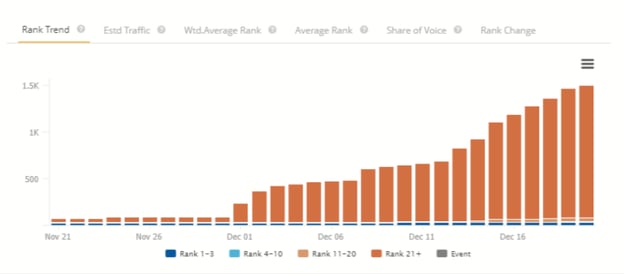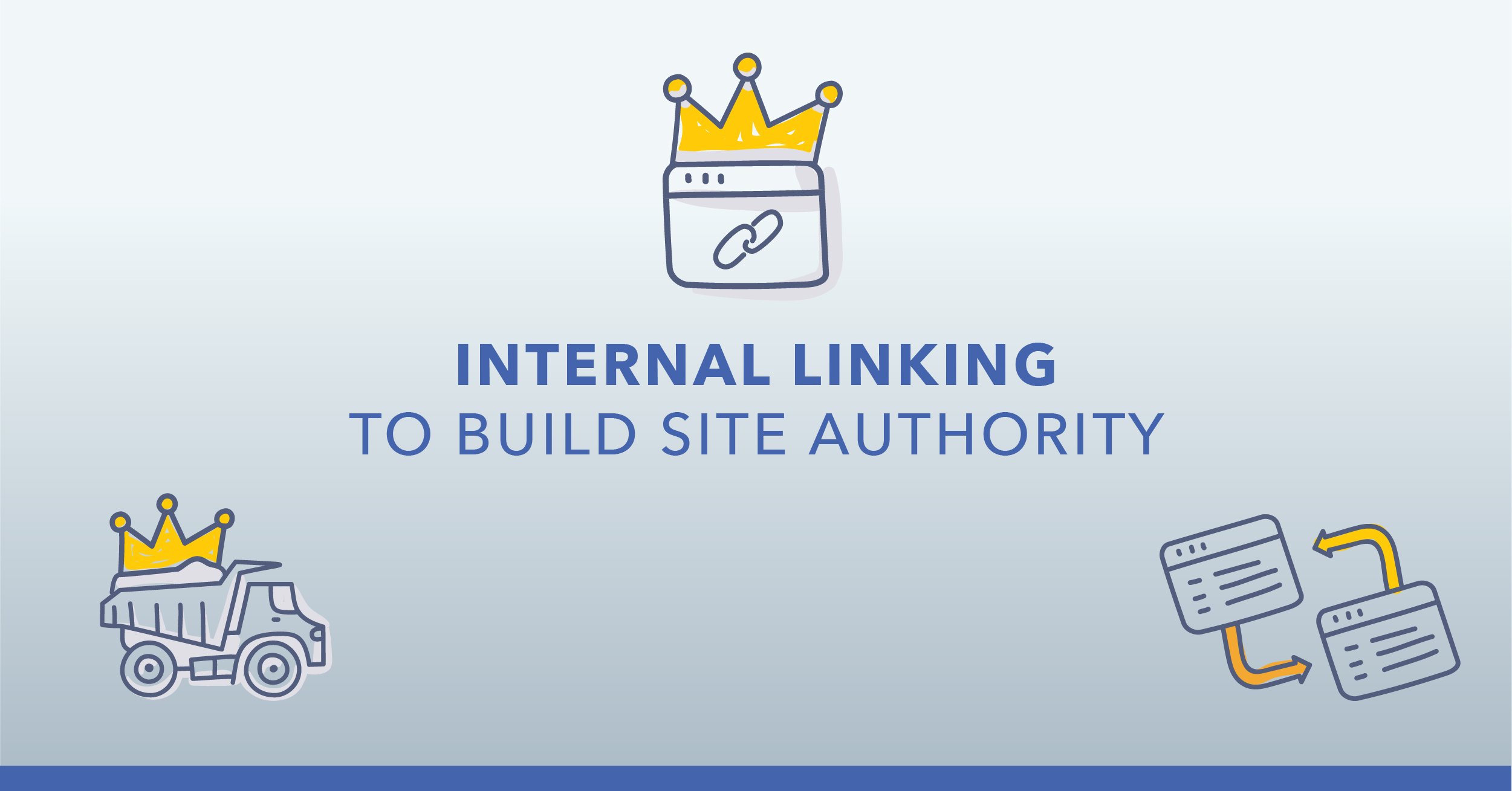Navigating the intricate world of SEO monitoring and reporting can feel like untangling a web of endless metrics. With so much data at your fingertips, how do you know which numbers really drive success?
Whether you're building reports for stakeholders or fine-tuning your own SEO strategy, focusing on the right metrics is key to making smarter, data-driven decisions.
To help you out, we've distilled insights from top global SEO leaders to pinpoint the most important metrics to monitor for enterprise SEO and organized them into 5 main categories:
If you’re just getting started with search engine optimization, we have a concise list of five key SEO metrics that you need to track!
What Is SEO Monitoring?
SEO monitoring is the process of regularly tracking and analyzing the performance of your website in search engines to ensure it maintains strong visibility and meets your goals.
This involves keeping an eye on key metrics like keyword rankings, organic traffic, backlink quality, click-through rates, and site health. By monitoring these factors, you can quickly identify and address potential issues, such as ranking drops, technical errors, or changes in user behavior.
SEO monitoring also helps you evaluate the effectiveness of your strategies and adapt to algorithm updates or shifts in search trends, ensuring sustained success in your optimization efforts.
Key SEO Metrics to Monitor for Success
Now that you understand what SEO monitoring is and why it’s essential, let’s dive into the key metrics you should be tracking—starting with content performance metrics.
SEO Content Metrics
Content metrics show you how your web pages perform on the SERPs, but more importantly, they show you how searchers interact with your content.
Here are five of the most important content metrics to track.
#1. Rank Position
Despite massive changes on the SERPs and the proliferation of SERP features, it’s still important to track keyword rank. That's because rank position shows where your website appears in search engine results for specific keywords, directly influencing your visibility and organic traffic potential.
Monitoring rank positions helps you assess the effectiveness of your optimization efforts and identify opportunities to improve or maintain your rankings.
Content that follows Google’s E-A-T framework (expertise, authoritativeness, trustworthiness) tends to provide value to the end users and have a good rank position.
If you’re content ranks on the second page of Google, you can refresh the content to try to enhance it to properly address the target query. But if you rank in a position higher than ~50, your content likely missed the mark and you may need to start from scratch.
#2. Impressions
Impressions are a vital SEO metric that show how often your website appears in search results, reflecting the visibility and reach of your content.
A high impression count often indicates that your content is relevant to multiple keywords or high-search-volume terms, increasing its chances of being seen. It also suggests your listing is appearing prominently, likely on page one of Google, and confirms that your content aligns with user needs and queries.
Monitoring impressions helps validate the effectiveness of your optimization efforts and ensures your content is being presented to the right audience.
#3. Search Visibility
As mentioned, there have been many changes to the SERPs. This doesn’t mean that standard rank tracking is obsolete (see metric #1), it just means it has to be supplemented.
This is where search visibility comes in.
With personalized SERPs and search features like the Answer Box, images, ads, etc., it can be hard to get eyes on your content, even if you rank well organically.
This is why seoClarity introduced Visibility Share — a new way to track rankings based on actual pixel real estate on the SERP.
When Google recognizes your content as relevant and authoritative, it should not only offer it to users on page one, but ideally on the first fold of page one so users immediately see it.
#4. Click-through Rate (CTR)
Click-through rate (CTR) is the percentage of users who click on your website link after seeing it in search engine results. It’s calculated by dividing the number of clicks by the number of impressions and multiplying by 100.
For a user to click through to your site, your search listing has to be appealing. Thus, a high CTR shows that users saw value and relevance in your listing.
To create an engaging listing that will generate organic traffic, some methods involve including an enticing title tag and meta description, plus any applicable schema.
Recommended Reading: How to Improve Your Site's Organic Search Click-Through Rate
#5. Local Visibility
Relevancy goes beyond the search landscape at large and also includes local search visibility.
Local visibility is an SEO metric that measures how well your business ranks and appears in local search results, such as "near me" searches or queries tied to a specific location. It reflects your presence in search engine local packs, maps, and localized organic results, helping you gauge how easily nearby customers can find your business online.
Monitoring local visibility is essential for brick-and-mortar businesses or service providers targeting a specific geographic area, as it directly impacts foot traffic, leads, and local engagement.
SEO Engagement Metrics
Once users land on your site, it’s important to know how they interact with the content.
Engagement metrics can clue you in on how relevant your content is, but they don’t always tell the whole story. As such, they should always be analyzed in relation to the type of page they deal with.
#6. Average Time on Page
Average Time on Page is an SEO metric that measures the average amount of time users spend on a specific page of your website. It provides insight into how engaging and relevant your content is to visitors. This metric is especially useful for evaluating the performance of informational or content-rich pages.
A long average time on page typically indicates that users found your page valuable and decided to explore. For example, if your page is a blog post, a long time on page can signal that users are actually reading the content.
A shorter time may signal a need to improve the page’s clarity, structure, or relevance to user intent. Granted, some pages are more likely to have a shorter time on page because of the nature of the content itself.
If a user just wants to know the weather, for example, a page with the week’s forecast will likely have a very short average time on page, but it’s no cause for concern. The users get what they’re looking for and continue on their search journey.
#7. Dwell Time
Dwell time is often confused with time on page, but there’s one key difference: dwell time accounts for the amount of time a user spends on a page after clicking through from the SERP. Average time on page, on the other hand, is simply the average amount of time a user spends on the page coming in from any channel (organic, paid, social, etc.)
Despite their differences, the same analysis applies for both metrics.
If users find that your website properly addresses their query, they’ll be more likely to stay on your page for a longer period of time. So, you can correlate dwell time with value.
However, the same exception applies: some pages are designed to immediately answer a query, and will naturally have a low dwell time.
Analyze your dwell time through the lens of the searcher. What you may think is a poor response signal may not be a cause for concern after all.
#8. Bounce Rate
Your bounce rate reveals how many users left your site after viewing only one page — which can shine a light on the users’ overall experience on your site.
A high bounce rate can imply that users don’t find your content to be valuable or relevant to their search. But, like the time on page metric, bounce rate is subjective to its respective page and the content type.
A searcher may come to your site, immediately get the information they seek, and then leave.There’s no reason for them to further explore your site.
Keep this in mind as you evaluate your pages’ bounce rates and don’t let it be a defining metric for understanding the end user experience.
Recommended Reading: What Your Bounce Rate Means for Your SEO
#9. Exit Rate
Exit rate tells you the percentage of users that left your site at any level of their search journey (whereas bounce rate is only concerned with the users viewing one page).
Google has a great reference on distinguishing between bounce rate and exit rate.
This metric can help you understand where users decide to leave your site. Does one page have a higher exit rate than others? You may want to optimize it for the end users.
Like the other engagement metrics we’ve covered, a high percentage doesn’t always mean there’s a problem. A search journey has to end somewhere and the users may be content on their way out.
Mobile Metrics
All of the above metrics are relevant for desktop, but they’re important to monitor on mobile, too!
Mobile continues to grow and become more important in the world of search and SEO. Each content and engagement metric should be analyzed for both desktop and mobile to fully understand your SEO performance and users’ behavior.
What works on desktop may not work on mobile. Your mobile audience has unique intents that your content must deliver upon.
Technical SEO Metrics
Your development team has specific metrics that inform their work that also impact the end user experience.
Before you can focus on content’s relevance and your overall site authority, you first need to address usability.
Ultimately, content is meaningless if it doesn’t have a strong foundation to sit on.
#10. Crawlability Errors
Crawlability errors are a crucial SEO metric because they highlight issues preventing search engines from effectively accessing and indexing your website’s content. If search engines can't crawl certain pages, those pages won’t appear in search results, directly impacting your visibility and rankings.
Monitoring and resolving crawlability errors ensures that all valuable content on your site is accessible, helping to maximize your site’s search performance and user reach.
We worked with a company that had unknowingly implemented noindex tags, which prevented their content from appearing on the SERPs.
Once the crawlability error was resolved, they saw an incredible, consistent increase in search visibility.

Recommended Reading: How to Find (and Fix) Crawlability Issues to Improve Your SEO
#11. Number of Pages Indexed
This SEO metric tracks how many of your website's pages have been successfully indexed by search engines. This is important because only indexed pages can appear in search results, impacting your site's overall visibility.
Verify that the number of your indexed site pages aligns with the number of pages on your site. Of course, this won’t be an exact match since some pages, like log-in pages or security pages, don’t need to be indexed.
To get a quick understanding of how many of your site pages are indexed, type the following into Google search:
“Site: yoursite.com”

The number of search results is roughly the number of pages indexed.
Monitoring this metric helps ensure that your valuable content is discoverable, and it can also indicate potential issues like duplicate content, thin pages, or indexing limits that may need to be addressed to optimize performance.
#12. Page Speed
Page speed measures how quickly your website loads for users. It’s a critical factor because faster-loading pages improve user experience, reduce bounce rates, and are favored by search engine algorithms.
A slow page speed can frustrate visitors and may negatively impact your rankings.
In fact, every second counts.
Nearly half of consumers expect a webpage to fully render in 2 seconds or less.
You can monitor your page speed with a page speed testing tool. But larger enterprise sites would benefit from an SEO platform with the ability to audit page speed at scale — especially when there’s a direct relationship between page speed and conversion rate.
Recommended Reading: Page Speed and SEO: How to Improve User Experience and Rankings
SEO Authority Metrics
Links — both internal and external — can impact your search engine optimization efforts. When you monitor your link profile, you take an extra step to ensure that your backlinks are healthy and authoritative, and that your internal links are relevant to their pages.
#13. Backlinks
Backlinks refer to external links pointing to your website. They are a key factor in determining your site’s authority, as search engines view backlinks as endorsements of your content’s value and relevance.
High-quality backlinks from reputable sites can significantly boost your rankings, drive referral traffic, and enhance your online reputation.
To evaluate your link-building efforts and identify any harmful links that may need to be disavowed to protect your site's credibility, you’ll need to run a backlink analysis.
This shows you the number of referring domains and reveals the number of authoritative links that point to your site.
#14. Internal Linking Structure
Internal linking structure refers to the way links are organized within your website, connecting different pages and guiding users and search engines through your content.
A strong internal linking structure helps search engines understand the hierarchy and relevance of your pages, improving crawl efficiency and distributing link equity effectively.
It can also significantly influence how users interact with your site and perceive its value. It's crucial that your site taxonomy and hierarchy are intuitively designed, directly influencing the user experience.
Consider the logic and coherence of your internal links—are they guiding users naturally through their search journey? You should also evaluate your use of anchor text: does it effectively communicate the content of the destination page?
Executive SEO Metrics
All of the above metrics relate directly to the end user experience. If you can meet the user along their search journey with a foundationally strong site with relevant, authoritative content, those searchers should convert and/or become leads.
These are the metrics that your executive team will care about the most, after all. They want to see how SEO is related to driving the business’s bottom line.
#15. Organic Conversion Rate
Organic conversion rate measures the percentage of visitors from organic search who complete a desired action on your website, such as making a purchase, signing up for a newsletter, or filling out a form.
This metric is crucial because it shows how effectively your organic traffic is driving meaningful outcomes aligned with your business goals.
A high organic conversion rate indicates that your content, keywords, and user experience are well-aligned with user intent, while a low rate may signal a need for optimization in content, design, or call-to-action placement.
If you keep a close eye on the aforementioned metrics and optimize appropriately, your organic conversion rate should be in good standing.
#16. Return on Investment (ROI)
Similar to the organic conversion rate, ROI is one of the most influential metrics when it comes to proving the value of SEO to leadership.
It evaluates the profitability of your SEO efforts by comparing the revenue generated from organic traffic to the cost of your SEO strategy.
A positive ROI means your SEO is driving more revenue than it costs, while a negative ROI signals the need for adjustments in your approach. Monitoring ROI helps ensure that your SEO investments are delivering tangible business results and supports informed decision-making for future strategies.
#17. YOY Summary
Executive teams love to see wins, and they also like to see positive patterns — i.e. wins over time.
A year-over-year (YOY) summary compares key metrics, such as traffic, rankings, or conversions, over the same period in different years. This comparison provides insights into long-term trends, seasonality, and the overall effectiveness of your SEO strategy.
By analyzing YoY data, you can identify growth opportunities, assess the impact of algorithm updates or campaigns, and set realistic benchmarks for future performance.
It’s a powerful way to gauge progress and prove that SEO is a long-term solution that has the power to compound its successes.
Conclusion
Monitoring the right SEO metrics is the key to validating the impact of your efforts.
To streamline this process, seoClarity offers the industry's ONLY real-time, data-driven SEO reporting and analytics platform, designed to simplify tracking these crucial metrics.
Book a demo today to discover how you can uncover opportunities, gain actionable insights, and effectively communicate your SEO achievements.
<<Editor's Note: This piece was originally published in January 2021 and has since been updated.>>








1 Comment
Click here to read/write comments